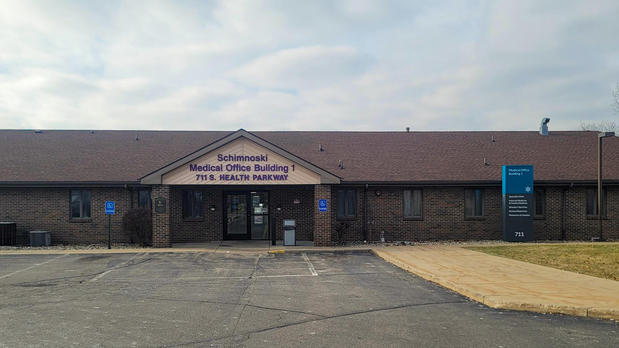Ganglion cyst
These fluid-filled, noncancerous lumps most often appear on wrists, hands or feet.
Overview
Ganglion cysts are lumps that most commonly develop in the wrist. They're typically round or oval and are filled with a jellylike fluid.
Ganglion cysts are lumps that most often appear along the tendons or joints of wrists or hands. They also can occur in ankles and feet. Ganglion cysts are typically round or oval and are filled with a jellylike fluid. They are not cancer.
Small ganglion cysts can be pea-sized. They can change size. Ganglion cysts can be painful if they press on a nearby nerve. Sometimes they affect joint movement.
For a ganglion cyst that causes problems, having a health care provider drain the cyst with a needle might be an option. So might removing the cyst surgically. But if there are no symptoms, no treatment is necessary. Often, the cysts grow and shrink. Some go away on their own.
Symptoms
These are common features of ganglion cysts:
- Location. Ganglion cysts most often develop along the tendons or joints of wrists or hands. The next most common locations are the ankles and feet. These cysts grow near other joints too.
- Shape and size. Ganglion cysts are round or oval. Some are too small to feel. The size of a cyst can change, often getting larger over time with joint movement.
- Pain. Ganglion cysts usually are painless. But if a cyst presses on a nerve or other structures, it can cause pain, tingling, numbness or muscle weakness.
When to see a doctor
See a health care provider if you notice a lump or pain in your wrist, hand, ankle or foot. You can get a diagnosis and find out whether you need treatment.
Causes
No one knows what causes a ganglion cyst. It grows out of a joint or the lining of a tendon and looks like a tiny water balloon on a stalk. Inside the cyst is a thick fluid like the fluid found in joints or around tendons.
Risk factors
Factors that may increase the risk of ganglion cysts include:
- Sex and age. Ganglion cysts can develop in anyone, but they most often occur in women between the ages of 20 and 40.
- Osteoarthritis. People who have wear-and-tear arthritis in the finger joints closest to the fingernails are at higher risk of developing ganglion cysts near those joints.
- Joint or tendon injury. Joints or tendons that have been injured are more likely to develop ganglion cysts.
Diagnosis
During the physical exam, a health care provider might press on the cyst to see if it hurts. Shining a light through the cyst might show if it's solid or filled with fluid.
Imaging tests — such as an X-ray, ultrasound or MRI — can help confirm the diagnosis as well as rule out other conditions, such as arthritis or a tumor.
Fluid drawn from the cyst with a needle might confirm the diagnosis. Fluid from a ganglion cyst is thick and clear.
Treatment
Ganglion cysts are often painless and need no treatment. Your health care provider might recommend watching the cyst for any changes. If the cyst causes pain or gets in the way of joint movement, you may need to:
- Keep the joint from moving. Activity can cause a ganglion cyst to grow. So wearing a brace or splint to keep the joint still for a time might help. As the cyst shrinks, it may release the pressure on nerves, relieving pain. But long-term use of a brace or splint can weaken nearby muscles.
- Drain the cyst. Draining the fluid from the cyst with a needle might help. But the cyst can come back.
- Surgery. This may be a choice if other approaches don't work. Surgery involves removing the cyst and the stalk that attaches it to the joint or tendon. Rarely, surgery can injure the nearby nerves, blood vessels or tendons. And the cyst can come back, even after surgery.
Lifestyle and home remedies
What not to do
An old home fix for a ganglion cyst involves hitting the cyst with a heavy object. This isn't a good thing to do. The force of the blow can damage hands or feet. Also, sticking a needle in the cyst to try to "pop" it can lead to infection.
Preparing for an appointment
You might start by seeing your primary care provider. You might then get a referral to a hand or foot surgeon.
What you can do
Before your appointment, you might want to write down answers to the following questions:
- How long have you had the lump? Does it come and go?
- Have you ever injured the joint nearest the lump?
- Do you have arthritis?
- What medicines and supplements do you take regularly?
What to expect from your doctor
Your health care provider is likely to ask you questions, such as:
- Do you have pain or tenderness?
- Does the bump keep you from using your joint?
- What, if anything, seems to improve your symptoms?
- What, if anything, appears to worsen your symptoms?
© 1998-2025 Mayo Foundation for Medical Education and Research (MFMER). All rights reserved.
Terms of Use





